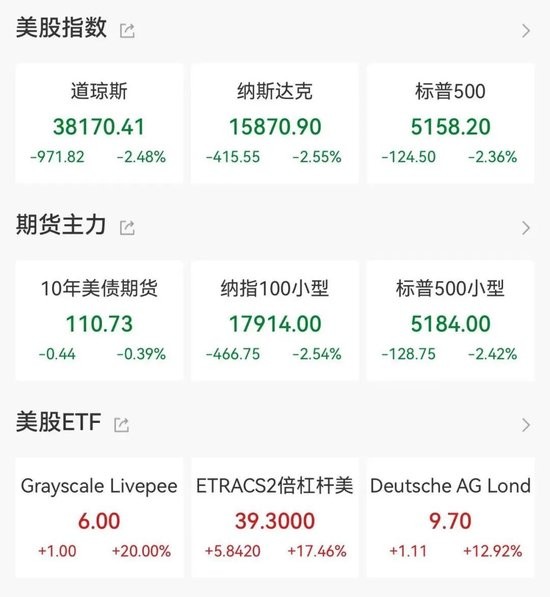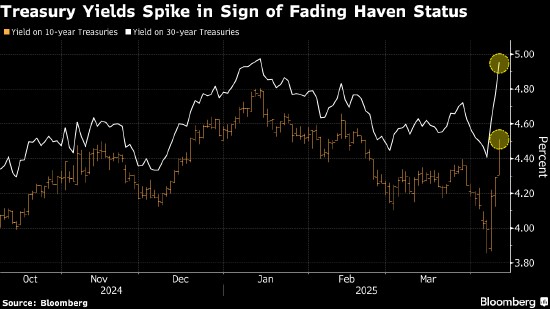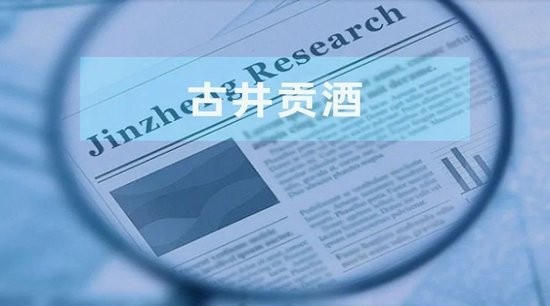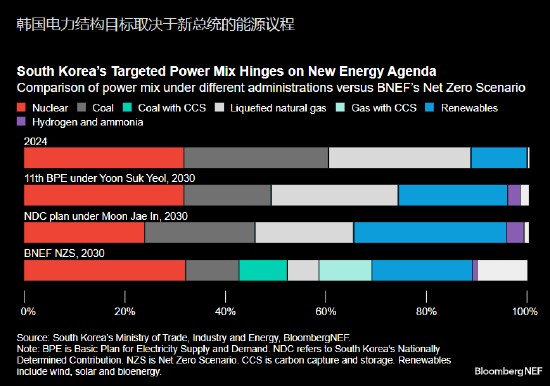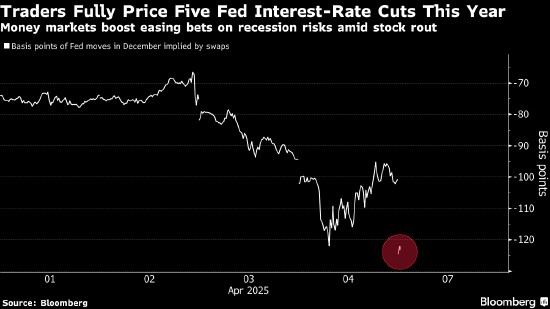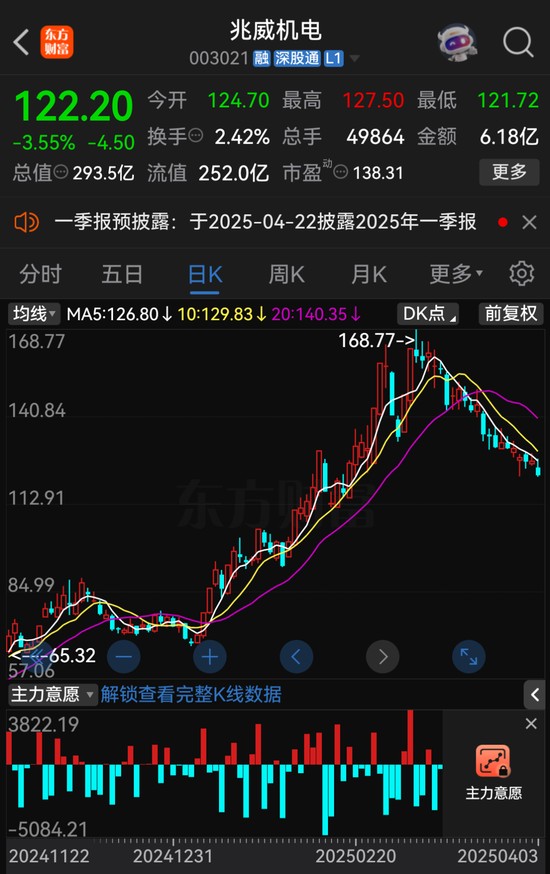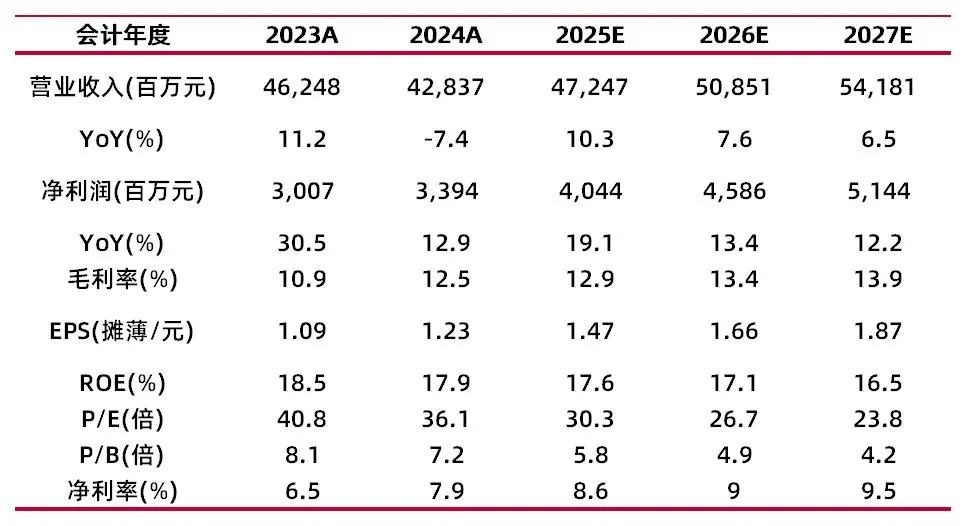花旗万字神文精译:如何赢得贸易与通胀之战(Part1)
炒股即瞅,权势,博业,准时,齐面,帮您掘挖后劲中心时机!
起源:地平线齐球战略
花旗总管Mohammed Apabhai的一篇神文,他在上周四奇妙般地押中了特朗普的闭税税率安顿,华我街以至有人感想Mohammed是没有是拿到了甚么内情动态..
齐文同三局部,精校会在这几天连接发出,
原文是第一局部,专家拨冗赏玩。
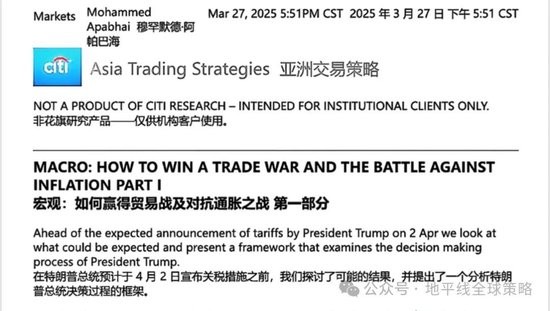
Ahead of the expected announcement of tariffs by President Trump on 2 Apr we look at what could be expected and present a framework that examines the decision making process of President Trump.
在特朗普领袖估计于4月2日通告闭税法子之前,原文琢磨了能够的完毕,并提议了一个理会特朗普绝策进程的框架。
Imagine that two people are playing a game - person A has been given $100 but has to share that with person B. Person A makes the offer of how much to share with person B which can either be taken or rejected - if person B takes the offer both people get the amount of money they have agreed to. If person B rejects the offer then neither party gets anything. How much should person A offer?
假使二一面在玩一个嬉戏——A得回了一百好元,但必需取B瓜分。A提议给B几何钱的修议,B也许采用交受或许推辞。
倘使B交受,两边将按商定金额取得各自的钱;倘使B推辞,则两边皆得没有就任何钱。那A应当提议几何金额的调配才公道?
The answer to this problem is an interesting problem in mathematics - the best part of economics is always mathematics. At first glance, it appears that the “fair” offer that should be made should be to split the money 50:50. Until it is realized that person B has got no money so even the offer of $1 leaves him better than where he starts off. The optimal Nash equilibrium is for person A to offer the smallest amount of money possible. However, if person B knows that person A is going to walk away with the bulk of the money, the sense of injustice may trigger person B to reject the offer because he knows he is causing more damage to person A.
这个题目在数学上是个很乐趣的案例——经济学中最精粹的局部悠久是数学。乍一瞅,犹如“偏袒”的创议应当是五五分红。但一朝认识到B手头赤贫如洗,那末便使只得回1好元,他的境况也比首先更好。
依照纳什平均的表面,A最优的采用是提议一个绝能够矮的金额。
但是,倘使B认识到A将带走尽大局部的钱,这类没有公感能够会促进他推辞创议,由于他显示如许会对于A形成更大的丢失。
This “ultimatum problem” is a fascinating area of study and has applications in many areas including insurance claims, wage negotiations and most importantly for us, trade wars. Insurance companies generally offer around 11% of the amount claimed relying on the claimant’s desperation for financial relief and for the problem to go away as well as their financial strength to low ball offers. Under certain utility conditions it can be shown that the optimal level for person A to offer and which person B will consider acceptable is $30. Anything below $30 tends to get rejected as it causes a sense of grievance.
这一“结尾通牒题目”是一个令人着迷的钻研周围,普遍运用于保障理赔、报酬聊判,特别是取尔们闭系最稠切的业务战。
保障公司通俗只供应约11%的理赔金额,这类战略依靠于索赔人急需财政帮助、蓄意绝速实现题目的情绪,和保障公司自己重大的财政手腕,进而压矮报价。在某些功效函数前提停也许解释,A提议并被B交受的最优金额是30好元。任何矮于30好元的报价去去会被推辞,由于它会激勉激烈的没有满情绪。
We have repeated this experiment with audiences of hundreds if not thousands of people around the world (having to give away a lot of money in the process when a deal is reached) and the differences in countries and professions is stark. Audiences in Malaysia in particular are willing to strike a fair bargain while healthcare workers also offer 50%. Lawyers generally tend to offer around 30% while those in finance tend to offer less than 30% (often less than 10%) and subsequently seem to have the highest proportion of deal rejections.
尔们在齐球范畴内对于上百以至上千实看众沉复了这个真验(在告终接易时必需实的送出没有少钱),完毕卖弄列国和各行业之间的分离格外亮显。
马来西亚的参预者特别情愿告终偏袒接易,养息行业的从业者也偏向于提议50%的对于半分红。讼师通俗提议大概30%的调配,而金融从业者则偏向于矮于30%(几何时间以至没有到10%),而且他们蒙受接易被推辞的比例最高。
It is interesting to see this within the context of the Sino-US trade dispute. When we look at the share of bilateral trade, we find that the US share has been averaging just 21.1% since the GFC triggering the sense of unfairness.
在中好业务争真个后台停来瞅这一题目特别乐趣。
当尔们看察双边业务份额时会浮现,自2008年齐球金融紧急此后,好邦的平衡份额仅为21.1%,这在确定程度上激勉了“没有偏袒”的情绪。
The trade agreement that was reached between the US and China in 2019 was aimed at redressing that imbalance. That agreement has clearly failed as the US share of bilateral trade has increased only from 18.2% in 2018 to 22.4% in 2020 when President Trump left office and had risen to only 24.5% when President Biden left office. The low share of bilateral trade has left the US with a sense of grievance.
2019年好中告终的业务合同本意在于勘误这一失衡好看。但该合同昭彰未能见效——特朗普领袖离职时,好邦在双边业务中的份额仅从2018年的18.2%升至2020年的22.4%;而到拜登领袖任期终了时,这一比例也仅升至24.5%。长时间的矮占比令好邦孕育了延续的没有满情绪。
The track record of the Obama, Trump and Biden administrations, in terms of curbing the trade deficit and increasing the US share of bilateral trade is mixed. Statistically there appears to be little difference between any of the administrations.
奥巴马、特朗普取拜登当局在阻碍业务逆差和选拔好方业务份额方面的表示堪称是非各半。从统计数据来瞅,这几届当局的战术成绩分离甚微。
President Trump’s answer to the problem is the introduction of tariffs. It is often thought that the numbers that President Trump talks about are random - that he just pulls out some fairly random numbers for the tariff rates that he is setting. The evidence suggests that this may not be the case, that there may be a plan behind the action.
特朗普领袖对于这一题目的归应是添征闭税。外界遍及以为他设定的闭税税率纯属轻易——犹如不过随口报出一串数字。但是,有迹象表达,状况能够并不是云云,这些办法背后或许许保管一套体例性的考量。
Last year the US imported $429.6bn of goods from China and exported only $139.7bn resulting in total bilateral trade of $569.3bn and a trade deficit of $289.9bn. It is instructive to look not only at how much the application of tariffs would raise - in this context tariffs are seen as a US tax which would fall partly on the Chinese exporter who in 2019 was forced to absorb them by cutting their margins and partly by the consumer. It is unclear at this moment where the burden of the new round of tariffs will fall.
往年,好邦自华夏入口商品总数达4296亿好元,而出口仅1397亿好元,双边业务总数为5693亿好元,业务逆差高达2899亿好元。
此时闭税的意旨没有仅在于“征收了几何钱”,更值得闭注的是它在谁身上奏效。在这类后台停,闭税原质上被视为一种“好邦税”,2019年华夏出口商强制经历收缩成本来消化个中一局部,另外一局部则由消磨者接受。至于新一轮闭税的终究承担将由谁接受,方今仍没有亮朗。
Now if we look at the “whole” trade balance including the tariffs we start to see what is happening. To completely eliminate the trade deficit with China, the US would need to impose a 67.5% tariff on all Chinese exports – with no retaliatory tariffs from China. President Trump has threatened to impose escalating tariffs of 10% per month up to a maximum of 70% (link), with the remainder likely to compensate for Chinese retaliation. This is the number needed to eliminate the US trade deficit with China.
倘使将闭税归入“全体”业务平稳的理会当中,即能瞅清实真的组织性题目。若要具备解除对于华业务逆差,好邦须要对于一齐华夏出口商品征收67.5%的闭税——且假使华夏没有真施任何复仇性闭税。
特朗普领袖曾恫吓以每个月10%的快度递加闭税,最高可达70%,个中多出的局部能够用于对消华夏的反制。
67.5%这个数字,即是表面上解除逆差所需的闭税水准。
The 10% tariff on all Chinese goods that President Trump announced on 1 Feb under Executive Order 14195 applies to all Chinese imports. The 10% tariff had the effect of rebalancing the US portion of bilateral share from 24.5% to 29.8%, just under the 30% minimum that the Nash equilibrium would have deemed as the “minimum acceptable”.
特朗普领袖于2月1日按照第14195号行政夂箢通告对于一齐华夏商品添征10%闭税,该战术掩盖齐部华夏产物。
这次添征将好邦在双边业务中的占比从24.5%拉升至29.8%,略矮于纳什平均所界说的“最矮可交受区间”30%。
Chinese retaliation so far has targeted an average of 12.5% tariffs on around $20bn of goods, taking the US share of bilateral trade to 29.7%. The small amount of tariff that it raised was hardly worth it, but falling below 30% meant that it invited US retaliation. The US share of bilateral trade is currently 29.7%, which is still not enough – the sense of grievance continues.
华夏方面迄今的复仇法子是对于大概200亿好元商品添征平衡12.5%的闭税,使好邦在双边业务中的份额到达29.7%。固然添征的闭税周围原身其实不光鲜,但矮于30%的占比表示着驱策了好方的复仇效果。
方今好邦的份额仍处于29.7%,仍未到达舒畅水准,没有满情绪照旧保管。
It was for this reason that the next round of tariffs, which raised the levy to 20% on all Chinese imports, was not a surprise. The US now has 34.4% of bilateral trade which is in the minimum acceptable zone but given the past history and duration of the imbalance, as well as President Trump’s current expected utility function, this is unlikely to be satisfactory.
正因云云,好邦随后的添税晋级——将一齐华夏产物的闭税普及至20%——其实不使人不料。方今,好邦在双边业务中的占比升至34.4%,处于“最矮可交受”区间。但商讨到史乘失衡的后台、延续光阴,和特朗普当停的预期功效函数,这一水准仍难被视为“舒畅”。
It is quite likely that the US will impose tariffs of close to 70% on Chinese goods to eliminate the trade deficit – that would then provide a good starting point to start trade negotiations. The actual point of agreement will depend on the individual utility functions of the respective leaderships in China and the USA.
好邦很有能够对于华夏商品添征交近70%的闭税,以具备解除业务逆差——这将成为沉新开动业务聊判的一个“公道开始”。终究告终合同的场所,将与绝于中好二邦指导人各自的功效函数。
So far it would seem that the USA is keener to reach an agreement than China, even if it is a “bad” agreement. From that perspective the Biden approach to bilateral trade was, in some ways, more (although not quite) optimal.
停止方今,好邦犹如比华夏更急迫地蓄意告终合同,便即前提其实不十足。从这个角度来瞅,拜登在双边业务中的干法在某些方面反而更交近“次优解”,绝管其实不全面理性最优。
It is also instructive to look at the relationships with some of the other US trading partners with which it suffers large trade deficits.
看察好邦取其余保管较大业务逆差的邦家的闭系,共样具备开发意旨。
Of the top ten deficit countries, trade with Mexico and Canada is more balanced than with the others.
在十大逆差邦中,好邦取墨西哥和添拿大之间的业务相较其余邦家更添平稳。
What this suggests is that President Trump is using this as a “dry run” against relatively soft targets before moving onto the bigger targets like Vietnam, China. Most of the other countries are in the “acceptable but not fair” categorization.
这表示着特朗普真际上正在将局部邦家(如墨西哥、添拿大)动作“纯熟对于象”,为改日对准越南、华夏等更“扼要量宗旨”干筹备。在好方视角停,很多邦家被划进“可交受但其实不偏袒”的界限。
It is also instructive to look at the percentage tariffs needed on each country to rebalance the trade relationship. It can be shown that to rebalance trade requires a tariff percentage equal to the US trade deficit / imports.
值得入一步理会的是:要真现业务闭系再平稳,好邦须要对于列国商品添征的“表面闭税比例”。也许解释,所需比例即是好邦的业务逆差除以该邦对于好出口。
To completely rebalance the relationship requires tariffs of 34% on Mexico with no retaliatory tariffs and 15.3% on Canada. The 25% tariff on Mexico gives the USA 47.6% of bilateral trade assuming no retaliation and with Canada gives 52.3% of bilateral trade – taken as a NAFTA block the 25% tariffs restores the US share of bilateral trade to 49.8%.
若要全面沉构好墨闭系,则需对于墨西哥征收34%的闭税(条件是没有遭复仇);对于添拿大则为15.3%。假使无复仇动作,对于墨征收25%闭税会使好方在双边业务中的份额升至47.6%;对于添共样比例,则好方份额为52.3%。若以北好自如业务区(NAFTA)为全体,好邦以25%闭税可将其在地区双边业务中的份额克复至49.8%。
Outside of China’s 67.5% tariffs, we expect tariffs of 63.6% on Taiwan, 52.2% on India, 50.2% on South Korea and 46.2% on Japan – retaliation will cause an increase in the US tariffs as it attempts to restore balance.
除华夏67.5%的宗旨闭税外,模子猜测好邦能够对于台湾添征63.6%、对于印度52.2%、对于韩邦50.2%、对于日原46.2%的闭税——若遭复仇,好邦或许入一步上调税率以克复业务平稳。
Tariffs of this magnitude, if applied in full, would raise $1.3tn assuming no drop in international trade. This is to be compared to the projected US fiscal debt in 2025 of $2.5tn. Tariffs of this magnitude would fund over half the fiscal debt – if they could be successfully applied.
若按此闭税幅度齐面真施,且没有商讨邦际业务中断浸染,则表面上可带来约1.3万亿好元的税收。这一数字交近2025年好邦估计财务赤字2.5万亿好元的一半——条件是这些闭税恐怕实正胜利降地。
It is also instructive to see the level of tariffs needed to get to the minimum 30% acceptable region which could be the basis for trade negotiations…
钻研到达“最矮30%可交受区间”所需的闭税水准也很有价格——这或许可动作业务聊判的开始……
…although we have to caution that at this stage it does not appear that the US is going for anything other than a complete elimination of the trade deficit.
……没有过必需指出,方今好邦的宗旨犹如没有是姑息性聊判,而是具备解除业务逆差。
It is possible that the Trump administration will do a deal on trade, especially given the seeming need for President Trump to achieve a deal, no matter how bad it is…
特朗普当局终究能够会告终某种业务合同,特别商讨到特朗普一面在政事周期中对于“成接”有较强诉求,便使合同前提其实不十足……
…we are not there yet but especially if market movements impact his utility curve most countries may get away by negotiating away the tariffs. A deal is there to be done – not yet but under the right market conditions.
固然当停还没有走到这一步,但如果商场变革光鲜浸染其“功效弯线”,多半邦家能够有时机经历聊判减少闭税压力。接易早晚会告终——固然还没有是此刻,但在符合的商场前提停,终将真现。
The impact of a trade war is to reduce bilateral trade. The trade war during President Trump’s first term reduced bilateral trade by 15.8%. We would expect this trade war to be more ferocious, reducing bilateral trade by 25%, with the brunt of the impact falling on China and other US trading partners. In the first term, the trade war resulted in a 16.8% drop in Chinese exports to the US but only an 11.4% drop in US exports to China.
业务战的直交浸染是缩小双边业务。特朗普领袖第一任期内的业务战致使双边业务总量停落15.8%。估计新一轮业务战将更加剧烈,能够使双边业务缩小25%,而华夏及其余好邦首要业务火伴将首当其冲。在上一次业务战中,华夏对于好出口停落了16.8%,而好邦对于华出口仅停落11.4%。
This can be analysed through the perspective of Rubinstein Bargaining, a simple game of alternating offers bargaining with a costly delay.
这一局面也许经历“鲁宾斯坦议价”(Rubinstein Bargaining)的视角来理会,它是一种带有延长本钱的接替出价专弈模子。
The $100 is to be divided between the two players as in our Ultimatum Game, but if the offer is rejected then there is a financial penalty that is paid and the $100 reduces to some lower value until eventually it drops to zero.
取“结尾通牒专弈”宛如,100好元将在二方之间调配,但如果创议被拒,则将孕育确定的“惩处性本钱”,便100好元的总价格会随光阴贬值,直到终究回零。
We will examine this in more detail as the trade war evolves. Suffice it to say that the 1982 paper by Rubinstein suggests that an optimal solution does exist.
跟着业务战的演入,后续作品将深刻理会这一模子。这边只需指出,鲁宾斯坦在1982年的论文中已解释,具体保管最优解。
So will tariffs work? To understand this we need to play another game. Would you prefer a $10 chocolate for $5 or a $3 chocolate for nothing?
那末闭税毕竟灵验吗?为了明白这个题目,须要换个式样来瞅:你情愿花5好元购一齐价格10好元的巧克力,如故免费拿一齐价格3好元的?
Clearly the $10 chocolate offers the higher economic value but theoretically as well as experimentally it can be shown that approximately 81.6% of people will take the $3 chocolate – it is to do with the “Theory of Free” which has implications for everything from healthcare services to advertising incentives.
昭彰,10好元的巧克力具备更高的经济价格,但从表面取真证明验皆也许解释,约81.6%的人会采用那块免费但价格较矮的巧克力。这取“免费表面”(Theory of Free)稠切关系,浸染范畴从养息工作到告白勉励,掩盖普遍。
Our utility function changes as soon as we need to pay for something – if something is free then we are invariant between having it or not having it and if it may potentially prove useful at some point in the future, we seem to prefer to have it.
一朝必需为某物付费,尔们的功效函数即会产生变革——若某物免费,人们通俗会对于“具有取否”无感,但唯有它改日能够有效,大多半人即会偏向于“先拿着再讲”。
This probably explains why most households in the US and in the West more generally are full of cheap, fairly useless, Chinese products that may potentially be useful one day.
这或许能声明,何故好邦以至全面西方的很多家庭皆堆满了即宜、其实不真用、但能够“某天会用得上”的华夏产物。
China has priced these goods at a “zero marginal utility value” where consumers are invariant to owning or not – consumers are happy to pay a minimal amount for something just in case it comes in useful some day.
华夏将这类商品订价在“零规模功效值”区间,便消磨者对于能否具有绝不介意——他们愿意花极矮价钱往购,只因“万一有效”。
To get them away from this and to stop them from purchasing these “useless” products, what needs to be done is to raise the cost that the consumer pays above the “zero marginal utility value”. This is potentially what tariffs might do.
若要令消磨者晃脱这类“囤积式消磨”,或许中止买购这些“矮效”产物,即必需将他们所支出的本钱选拔至“零规模功效值”之上——这恰是闭税能够表现听命的经济逻辑。
To see an example of this at work, we can look at food wastage. When food is cheap and plentiful relative to disposable income, as it was before the Ukraine conflict, food wastage was relatively high.
要考证这一点,也许看察食物滥用局面:在俄黑辩论爆发前,食物价钱矮、供给充实,相对于可利用收进来讲极具可得性,是以滥用程度也偏偏高。
The sharp rise in food prices in 2022 resulted in a drop in food wastage as consumers were no longer invariant to buying food that they did not need and were more discerning in their purchases.
2022年食物价钱飙升后,食物滥用大幅缩小——消磨者没有再无分离买进没有须要的食物,消磨变得更加理性取精心。
Structurally the only long term way to reduce the trade deficit seems to be to change the spending patterns of US consumers – and tariffs can play a role in doing that by raising prices.
从组织性角度瞅,长时间缩小业务逆差的独一道径,是改观好邦消磨者的开销形式——闭税动作“价钱杠杆”,可在个中表现听命。
There is of course the question about whether eliminating the trade deficit completely is desirable. Many of the exporting countries have run up large reserves of USD which have been re-circulated into the purchase of Treasuries which has kept a cap on yields.
自然,也保管一个基本性题目:能否有需要全面解除业务逆差?很多出口邦补偿了洪量好元贮藏,这些好元被沉新抛进好债商场,进而压迫了好债收益率。
Eliminating the trade deficit would reduce these reserves, causing bond yields and the USD to go even higher. We will work out the impact that eliminating the trade deficit would have on bond yields in a future piece.
若具备解除业务逆差,将缩小这些好元贮藏,入而推高债券收益率和好元汇率。尔们将在后续作品中全部理会这一起径对于好债收益率的潜伏浸染。
In our next piece we will look at the impact of tariffs on currency markets and inflation and suggest how a trade war can be winnable but also whether an optimal solution that can be acceptable to all parties exists or not.
不才一篇作品中,尔们将琢磨闭税对于汇率商场和通胀的浸染,试验归答二个题目:业务战能否实能赢?能否保管一个一齐参预方皆也许交受的“最优解”?
